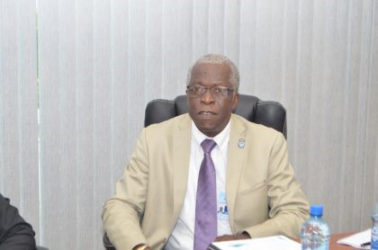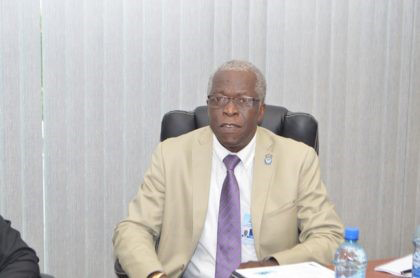With two plane crashes mere weeks apart in Region Seven (Cuyuni/Mazaruni), Director-General of the Guyana Civil Aviation Authority (GCAA) Lt. Col. (Ret’d) Egbert Field yesterday said the regulatory body had no worries about the age of the aircraft involved.
“I am not concerned about the age of the aircraft because the aircraft was made to have a lifespan of years. Sometimes 30, 40, 50 years. What the authority concerns itself about is the quality of maintenance for the aircraft. That is the reason why we have inspectors who go out and undertake surveillance exercises… we keep a very close eye on the maintenance of aircraft. Each year, an aircraft has to apply for a certificate of airworthiness,” Field told reporters yesterday.

Last month, veteran pilot Collin Martin, of Roraima Airways, died after the Britten-Norman Islander aircraft he was piloting crashed a short distance from the Eteringbang Airstrip. The Roraima Airways plane was on a shuttling mission with another Roraima-owned aircraft behind when upon approaching the runway it nosedived and landed in the jungle.
On Tuesday, another accident occurred a short distance from that airstrip. In that instance, a single engine Cessna aircraft belonging to another domestic carrier, Wings Aviation and piloted by Dominic Waddell, crashed shortly after takeoff. Waddell was also on a shuttling mission when the incident occurred around 11am. A statement from the GCAA stated that he suffered minor injuries as a result of the incident.
Field, when asked yesterday by Stabroek News whether the regulatory body had any concerns on the state of that particular airstrip, said that based on its analysis, the GCAA did not see the airstrip “being involved in any way or being a cause. No we do not have any concerns with reference to the airstrip.”
Field was also asked whether the second pilot in the fatal plane crash would have provided any information that could shed some light on how the crash occurred.
“What the second pilot in the first crash said is that the other aircraft was about five minutes in front of him because they were both on a shuttling mission and when he came around to land he saw the aircraft in the bushes. Apparently he couldn’t see when he went down. He was a couple of minutes behind him.”
Accident investigator Paula McAdam had told this newspaper that a team would be heading into the area to secure the engine.
Yesterday, Field confirmed to reporters that the engine has been retrieved from the crash site. “That should be shipped out to the manufacturers,” he said when asked for an update on the investigations.
“The last accident, a view days ago, an investigator is now at that location securing the engine to ship it out to Georgetown for further transportation to the manufacturers,” he added. While he said there are no findings on any of the accidents at the moment, he added that as investigations are ongoing, they are hoping that they can come to a definite conclusion in an effort to ascertain what would have been the causes. “We have to look at equipment, weather conditions and we also have to look at the human factors involved. Not discounting any one of them,” Field said.





